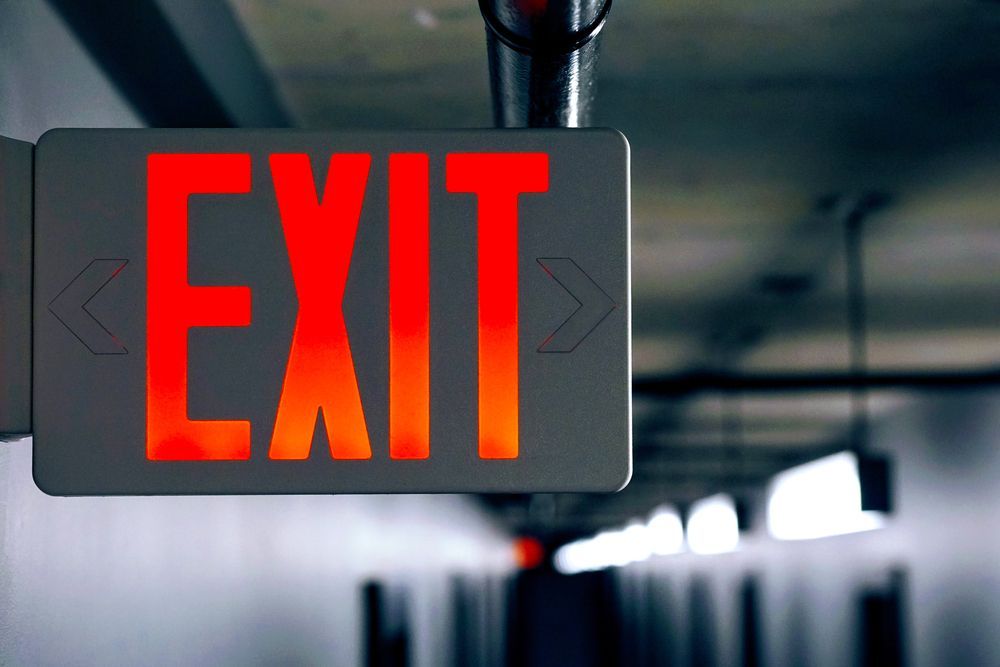If you currently own or are building any commercial property, you may have heard about emergency lighting. A required component for all commercial building projects, and even large-scale residential projects, emergency lighting illuminates pathways to exits otherwise known as egress paths. These lights help facilitate evacuation when things go wrong.
However, without the proper know-how, the seemingly limitless options may have you questioning which one is best. Here, we will explore four of the best options for emergency lighting battery systems, helping you make the best decision for your own facility.
Emergency Lighting Battery Systems: What is Required?
In terms of design, installation, and power supply, there are notoriously strict requirements for emergency lighting and their battery systems. However, even if the requirements were not mandated, the life-saving nature of these lights means you must still ensure you utilize the most reliable and efficient tech available. For your own emergency lighting system, there are two main standards your systems must meet to be compliant.
The National Fire Protection Association (NFPA) Life Safety Requirements
Today, the NFPA Life Safety Code is the most widely used source for protective strategies based on building construction, protection, and occupancy. Designed to minimize the effects of fire and related hazards, a thorough understanding and continual consultation of this resource is critical when ordering and installing your own emergency lighting system.
UL 924 and its Impact on Emergency Lighting Battery Systems
For exit signs, emergency lighting, and power equipment using fewer than 600 volts of electricity to operate, UL 924 is the ultimate industry standard. One important distinction to note is that UL 924 encompasses not only automatically illuminated equipment, but also equipment that powers critical or high traffic areas in the event of an electrical failure. Accordingly, your lighting systems, along with your battery system or inverter, would fall under this code.
The Four Most Common Types of Rechargeable, Emergency Lighting Batteries
Now that we understand some of the basic requirements that your emergency battery lighting system must meet, we can take a closer look at what a few of the most common options are, and why they may or may not work for your particular needs.
1. Sealed Lead Acid
A sealed lead acid battery is the most reliable and widely-used power source currently on the market. Some benefits of this type of system include the fast recharging rate, as well as the ability to reduce water loss and recycle gases to prevent damage. However, these batteries must always be kept in an upright position and protected against leakage. Otherwise, they could fail when you need them most.
2.Valve Regulated Lead Acid
As the name suggests, valve regulated lead acid batteries include a pressure relief valve as an additional safety measure. A great low-maintenance power option, these batteries will not spill if inverted and are especially reliable for emergency lighting.
3. Nickel-Cadmium
Because these batteries are much more costly than equally serviceable options, nickel-cadmium batteries are rarely used today. However, their strong cycle life and high-performance rates mean these batteries can withstand high discharge rates more safely than other alternatives and with little damage. These batteries also weigh less and have a simpler structure than other options.
4. Nickel-Metal Hydride
Due to their low internal resistance, nickel-metal hydride batteries are great for high current drain applications. However, they are also rarely used due to their high rate of self-discharge. In many instances, they can lose up to 4% of their charge per day in storage, making them less than ideal for emergency lighting.
The Importance of Emergency Lighting Inverters
Once you decide which type and/or system of batteries you would like to use, you must then select a lighting inverter. The main purpose of an emergency lighting inverter is to convert the power generated by these batteries into usable power for equipment, such as lighting.
Besides the two important codes discussed earlier, one additional requirement for emergency lighting is an operating time of at least 90 minutes with no power. Luckily, inverters are ideally suited to handle these energy requirements. Because they have a high degree of control over electrical output, they produce a much more stable current which also makes them extremely energy efficient and “clean.”
As a result, emergency lighting inverters also help facilities meet the NFPA and UL 924 requirements, making them a critical component of any emergency lighting battery system.
Lighting Inverter Supply: Lighting the Way
Lighting Inverter Supply designs and manufactures emergency lighting inverters that are fully compatible with all lighting fixture types, including LED. Our goal is to become a part of your maintenance team, keeping your buildings safe in the event of an emergency. We can provide product solutions, metering, and site visits to any customer site in the contiguous U.S.
If you would like to speak with our team and get expert guidance on your emergency lighting battery system needs, we are here for you. Contact our team today to get started. Call 844-501-1887.
Resources:


Request a Quote From a Product Specialist
Experienced Product Representatives are on hand to send you information and quotations for equipment. If you need help with sizing, installation planning, or general questions about product please fill in the appropriate form and someone will contact you shortly. You may also call 844-501-1887 to get a direct product representative.
Contact Us Page Form
We will get back to you as soon as possible.
Please try again later.

